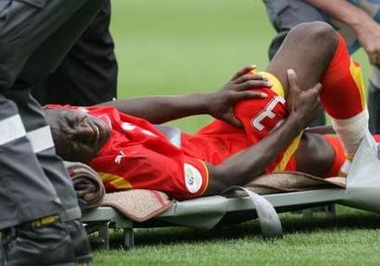
In a previous BJSM online poll, 76% of respondents agreed that ultrasound was going to be a part of routine sports medicine practice in the office setting. BJSM’s editorial policy is to mirror important advances like this and to publish relevant papers. Thus, in 2010 we were the first sports medicine journal to dedicate an issue to this topic.
Key papers in our collection include:
- Ultrasound as the new stethoscope: AMSSM pioneers curriculum (gently!). Karim M Khan. Br J Sports Med. 2010;44: 1133
- Musculoskeletal ultrasound: taking sports medicine to the next level. Kimberly G Harmon & Francis G O’Connor. Br J Sports Med. 2010;44: 1135-1136
- Musculoskeletal ultrasound: changing times, changing practice? Bruce B Forster & Mark Cresswell. Br J Sports Med 2010;44: 1136-1137
- Musculoskeletal ultrasound education for sports medicine fellows: a suggested/potential curriculum by the American Medical Society for Sports Medicine. Jonathan Finnoff, Mark E Lavallee, & Jay Smith. Br J Sports Med. 2010;44:1144-1148 This is the key paper – the AMSSM curriculum.
- The match day use of ultrasound during professional football finals matches. Phillip James, Tim Barbour, & Ian Stone. Br J Sports Med. 2010;44: 1149-1152
We have also discussed the issue on a podcast:
- What is the future in sports imaging? Bruce Forster, David Hancock and John Orchard The panelists include the Olympic radiologist, a sports physician very versed in imaging for diagnosis and treatment, as well as a team clinician using imaging to help guide decisions on the road. In two weeks (August 16) you’ll be able to listen to a followup podcast with two more clinicians using US in the consulting room/office.
In the pipeline we have AMSSM videos that will be shown on the BJSM home page.
The Times, They Are a Changin’
The August online poll confirmed the popularity of US in the office – half of those who responded (over 100 votes in the short time window) were already using the instrument in the clinic/office. The main users (among BJSM readers) were sports physicians (45% of those who responded) and physiotherapists (30%). As expected in this setting, radiologists were only occasional providers of this service (13%).
This provides Q&D level evidence* of great interest in office ultrasound among our readers. It also underscores that radiologists are unlikely to do the bulk of imaging interpretation in that setting. Bring on the Ultrasound Education Programs targeting sports physicians!!
Footnote* For those not familiar with all the Oxford Evidence Based Medicine levels…
Q&D = Quick and Dirty